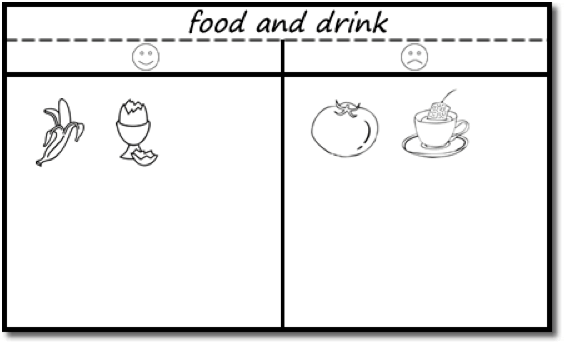Назар аударыңыз. Бұл материалды сайт қолданушысы жариялаған. Егер материал сіздің авторлық құқығыңызды бұзса, осында жазыңыз. Біз ең жылдам уақытта материалды сайттан өшіреміз
Жақын арада сайт әкімшілігі сізбен хабарласады

Бонусты жинап картаңызға (kaspi Gold, Halyk bank) шығарып аласыз
Food and drink
Дипломдар мен сертификаттарды алып үлгеріңіз!


Материалдың толық нұсқасын
жүктеп алып көруге болады
|
Long-term plan unit: 7 Food and drink |
School: |
|||||
|
Date: |
Teacher name: |
|||||
|
Grade: 1 |
Number present: |
absent: |
||||
|
Learning objectives(s) that this lesson is contributing to |
1.UE9 use common present simple forms [positive, negative and question] to give basic personal information 1.S5 use words in short exchanges 1.L3 recognise with support common names and names of places; recognise the spoken form of a limited range of everyday and classroom words 1.S1 make basic personal statements about people, objects and classroom routines |
|||||
|
Lesson objectives |
All learners will be able to:
Most learners will be able to:
Some learners will be able to:
|
|||||
|
Assessment criteria |
Learners have met the learning objective (1..L3) if they can: recognize and match 7-10 words of animals’ food |
|||||
|
Value links |
Respect, Cooperation |
|||||
|
Cross curricular links |
Science |
|||||
|
ICT skills |
Using videos |
|||||
|
Previous learning |
Food words |
|||||
|
Plan |
||||||
|
Time |
Planned activities |
Resources |
||||
|
Beginning
|
Organizational moment Hello, boys and girls How are you? What day is it today? What is the weather like today? Warming up Revision of the names of animals
NOTE: be sure to teach the plural for animals ("mouse" –> "mice"). Play "Flashcard touch" and "The missing flashcard" game
|
Flashcards Toys |
||||
|
Middle
|
Demonstration
grass, fish, bananas, milk, leaves, birds, bugs etc.
Introduce "Monkeys like" and " Monkeys don't like"
Practice Put the students into pairs. Each student has a picture of animals. They are going to make sentences using the food and drink items on the board. Model with a student first, so everyone understands what to do: Teacher says "bananas" – choosing an item from the board. The student has to make a sentence (e.g. "Monkeys like bananas"). Then in pairs, students take turns in choosing a food item for their partner to make a sentence about. For example: Student A: Milk! Student B: Cats like milk! Student B: Grass! Student A: Cats don’t like grass! Encourage the use of phrases such as "Yummy", "Yuk». Controlled Practice Listening Students are given worksheets with pictures of food. They listen to the sentences and tick “Yes” or “No”
|
PPT
Song https://www.youtube.com/watch?v=7DYjfjaZGas
Flashcards
Worksheet |
||||
|
End
|
Feedback Students share opinions if they liked/disliked the lesson by putting their thumbs up/down and explaining the reasons using simple language |
|
||||
|
Additional information |
||||||
|
Differentiation – how do you plan to give more support? How do you plan to challenge the more able learners? |
Assessment – how are you planning to check learners’ learning? |
Health and safety check |
||||
|
More support:
More-able learners: Encourage very strong students to model answers |
Students will be assessed through the controlled practice activity |
|
||||
|
Reflection Were the lesson objectives/learning objectives realistic? Did all learners achieve the LO? If not, why? Did my planned differentiation work well? Did I stick to timings? What changes did I make from my plan and why? |
|
|||||
|
Summary evaluation What two things went really well (consider both teaching and learning)? 1:
2:
What two things would have improved the lesson (consider both teaching and learning)? 1:
2:
What have I learned from this lesson about the class or achievements/difficulties of individuals that will inform my next lesson? |
||||||




